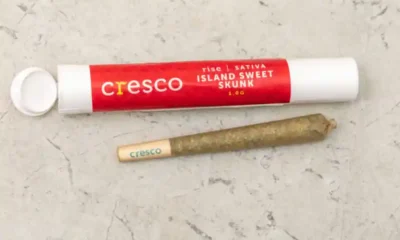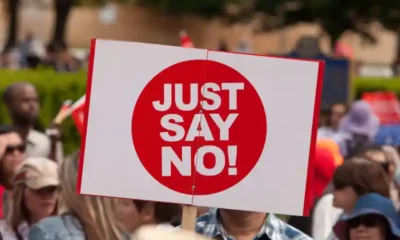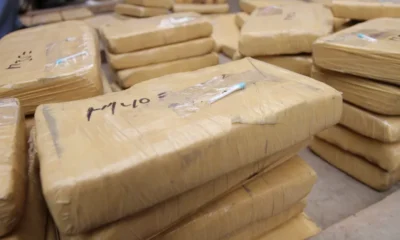Connect with us
Published
11 months agoon

Twitter announced its policy shift allowing THC, CBD, and other cannabis-related advertising back in February, though it looks like the process for cannabis advertisers could be smoother.
Months after unveiling the change, cannabis industry pros are still being met with challenges on Twitter, namely regulatory hurdles, the platform’s lack of familiarity with the cannabis industry and costs, according to an MJBizDaily report.
Twitter rules require advertisers to be verified via Twitter Blue or Verified Organization subscription, which adds blue or gold check marks, respectively, next to their account name. A blue check mark is $7 each month while a gold check mark is a $1,000 monthly fee, the latter ultimately too expensive for most businesses to afford.
Nikki Stanley, director of marketing for multistate cannabis operator Battle Green, told the publication that, in addition to being cost-prohibitive, Twitter also doesn’t reach the audiences they are trying to capture.
“Twitter seems to be more about people interested in the business side of cannabis versus the consumer,” she said. “You see consumers engaging more on Instagram and Reddit, not on Twitter.”
Even though Twitter’s cannabis advertising began in February, cannabis companies have reported mixed results as they began using the platform for marketing.
During the initial shift, Twitter shared it would allow advertisers to promote branded and informational cannabis-related content under specific categories earlier this year.. This includes CBD and similar products; THC and similar products; along with cannabis-related products and services, like delivery, labs, growing technology, search engines and events.
In April, the social media platform announced new changes, which allowed packaged cannabis products in ad creative and include updated medical and adult-use cannabis markets. Still, these updates don’t necessarily mesh well with players in the cannabis industry.
The latest change deems that ads cannot include pricing; offer promotions or discounts; or promote giveaways, sweepstakes or contests. Twitter also permits ads in new cannabis markets, but the company’s policy for drug advertising does not list medical and recreational markets where cannabis advertising is allowed.
According to Rosie Mattio, CEO of Mattio Communications, Twitter permits medical cannabis ads targeting users in Alabama, Arkansas, Florida, Minnesota, Mississippi, Missouri, Oklahoma, Pennsylvania, Puerto Rico, Rhode Island, South Dakota, and West Virginia. Missouri’s new adult-use market also permits adult-use cannabis ads.
Regarding the potential benefits cannabis companies can expect from Twitter advertising, Mattio said the platform allows companies to talk about specific products and reach their target audience, versus speaking more generally about cannabis in an attempt to educate consumers.
She also suggests that the platform allows businesses to be “more thoughtful about demographics” and to “create copy that resonates with that consumer and be very targeted with the message about what products go to what markets and what consumer profile.”
And while some businesses have seen an increase in sales through advertising on Twitter, others attest that the social media platform doesn’t understand the industry it’s looking to support.
Twitter reached out to cannabis edible company Wana before it made the move to allow cannabis ads on its platform. After reviewing the rules, Chief Marketing Officer Joe Hodas suggested ways to rewrite the rules to better reflect the needs of the industry, but Twitter reportedly refused.
Namely, he suggested the ability to run product specials with specific dispensaries, which is against Twitter’s rules, and the ability to insert the company into conversations on the platform, starting a dialog with potential customers about symptoms and conditions its products can address.
“Twitter offers us access to folks who aren’t thinking of cannabis as a solution,” he said. “I like what Twitter can potentially do for us, but if we’re not allowed to hyper-locally target, it probably doesn’t hold as much value for me.”
While there’s still time for things to shape up, the change also comes at a time where Twitter’s web traffic is steadily dropping under the leadership of Elon Musk and some users are gradually turning to the alternative Bluesky, backed by former Twitter CEO Jack Dorsey.


Cresco Labs Workers Reportedly De-Unionize


Arizona Church Reaches Settlement with DEA To Allow Sacramental Use of Ayahuasca


Gov. Kathy Hochul Honors New York’s 100th Adult-Use Retail Store Opening


D.A.R.E. Officer of the Year Discusses Relative Using Medical Cannabis for Cancer


Sweden Authorities Seize 1.4 Tons of Cocaine, ‘One of the Biggest’ Seizures Ever


Uber Eats Shares ‘Dopest’ Cities With Most MJ Deliveries in British Columbia, Ontario
